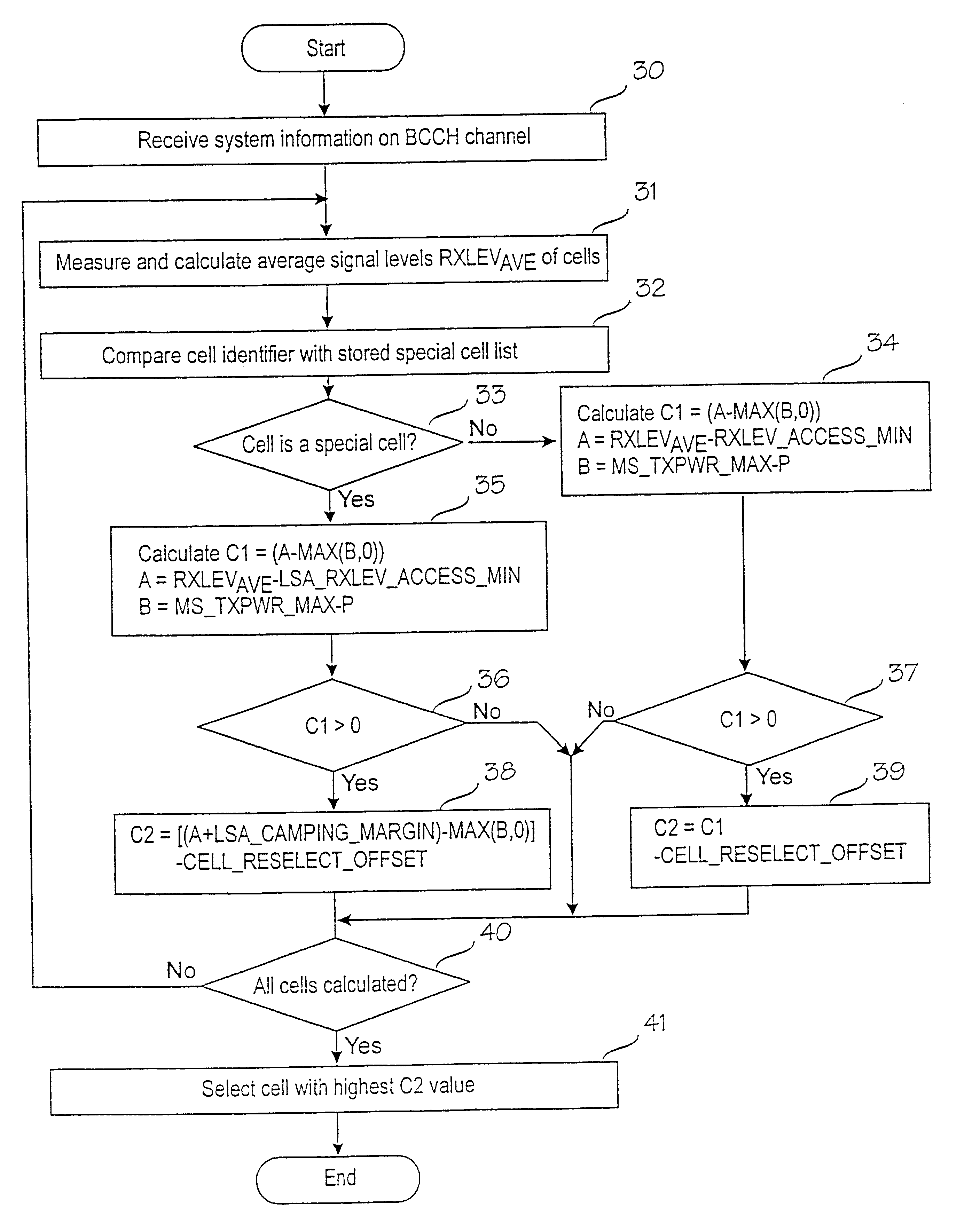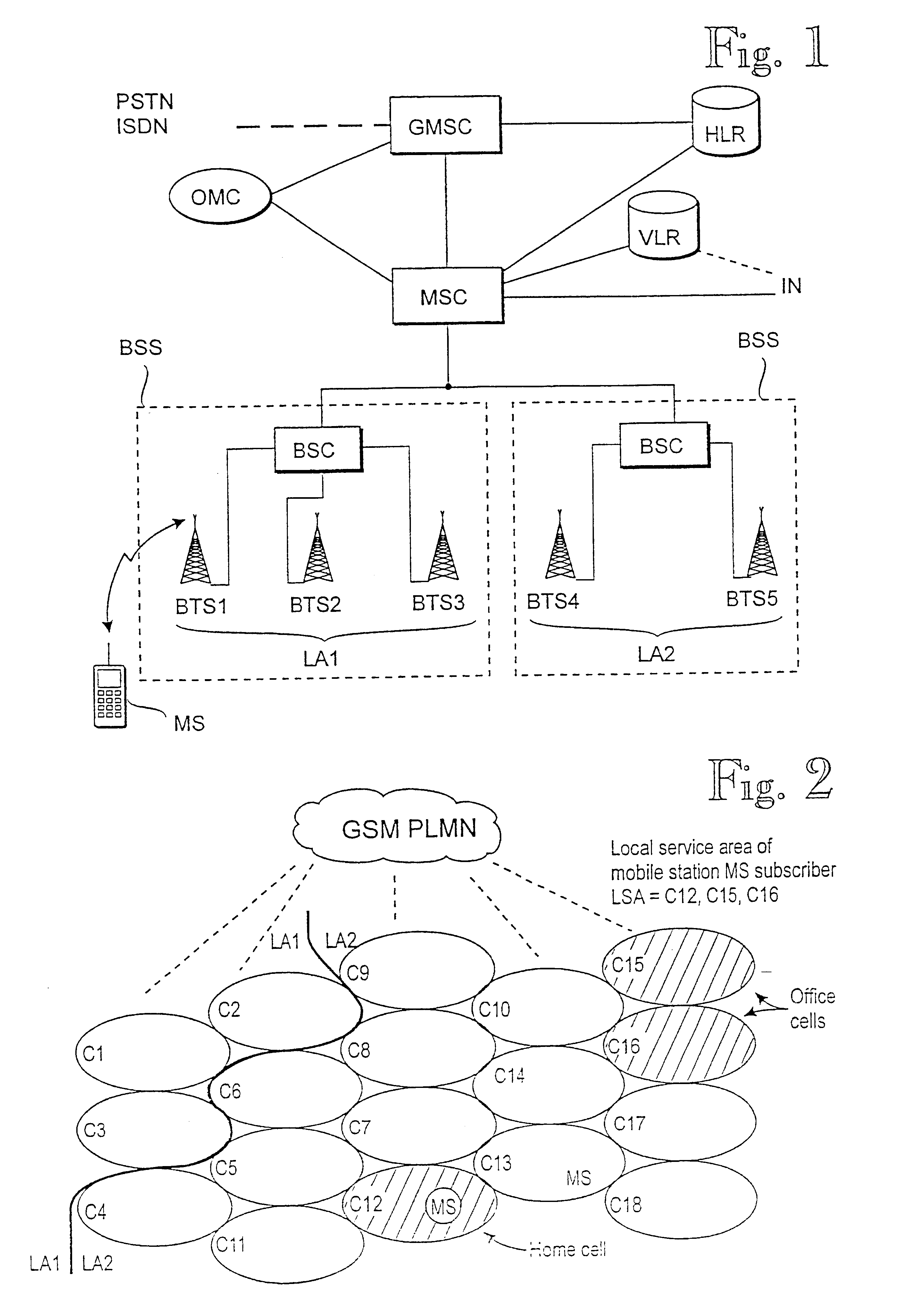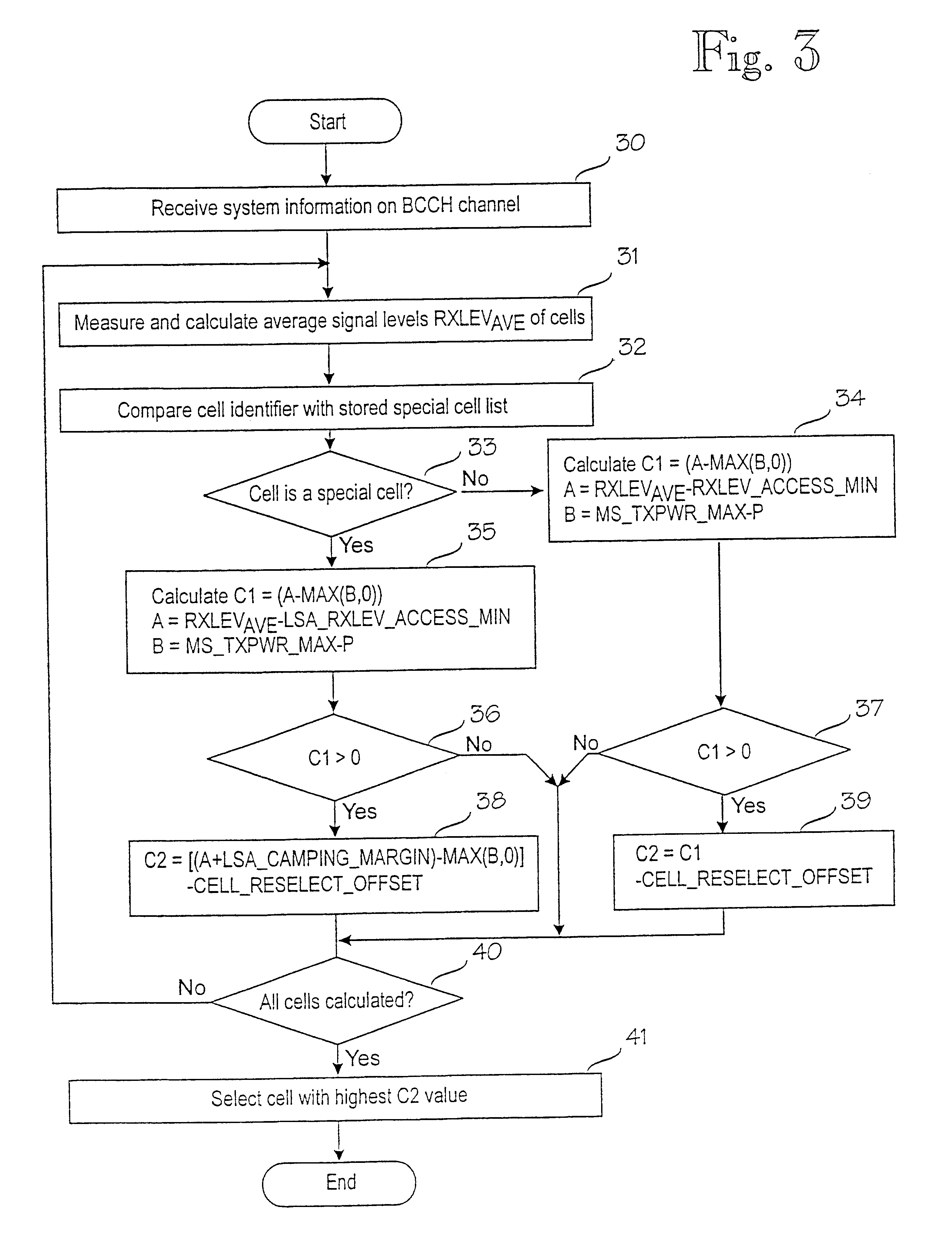Method for selecting cell in cellular network
- Summary
- Abstract
- Description
- Claims
- Application Information
AI Technical Summary
Benefits of technology
Problems solved by technology
Method used
Image
Examples
Embodiment Construction
The present invention can be applied to cell selection and to the camping function of the mobile station in any cellular radio system. In the following, the invention is explained in more detail in connection with the European digital GSM mobile communication system (Global System for Mobile Communications) and its version DCS1800 (Digital Communications System). FIG. 1 is a simplified view of the structure of the GSM network. For a more detailed description of the GSM system, reference is made to GSM recommendations and to The GSM System for Mobile Communications by M. Mouly and M. Pautet, Palaiseau, France, 1992, ISBN:2-9507190-0-0-7.
Referring to FIG. 1, the mobile station MS is camped on via a radio path to one of base transceiver stations BTS, in the case of FIG. 1 to the base station BTS1. The mobile station MS in the idle mode receives the broadcast of the selected base station. The base station system BSS comprises a base station controller BSC and base stations BTS controlle...
PUM
 Login to View More
Login to View More Abstract
Description
Claims
Application Information
 Login to View More
Login to View More - R&D
- Intellectual Property
- Life Sciences
- Materials
- Tech Scout
- Unparalleled Data Quality
- Higher Quality Content
- 60% Fewer Hallucinations
Browse by: Latest US Patents, China's latest patents, Technical Efficacy Thesaurus, Application Domain, Technology Topic, Popular Technical Reports.
© 2025 PatSnap. All rights reserved.Legal|Privacy policy|Modern Slavery Act Transparency Statement|Sitemap|About US| Contact US: help@patsnap.com



